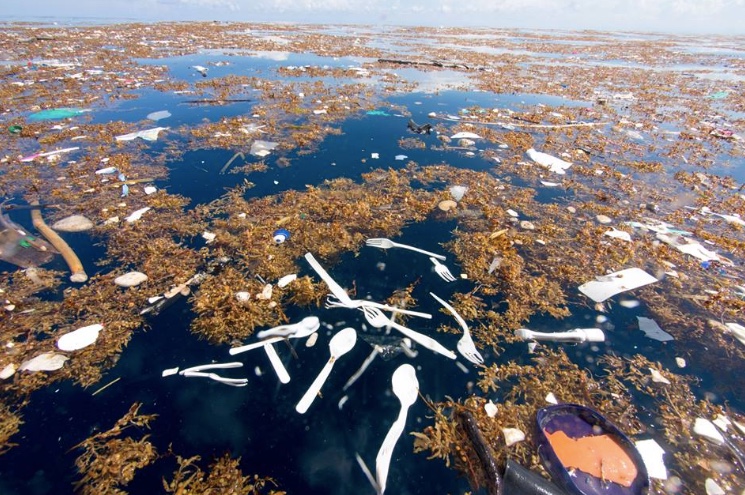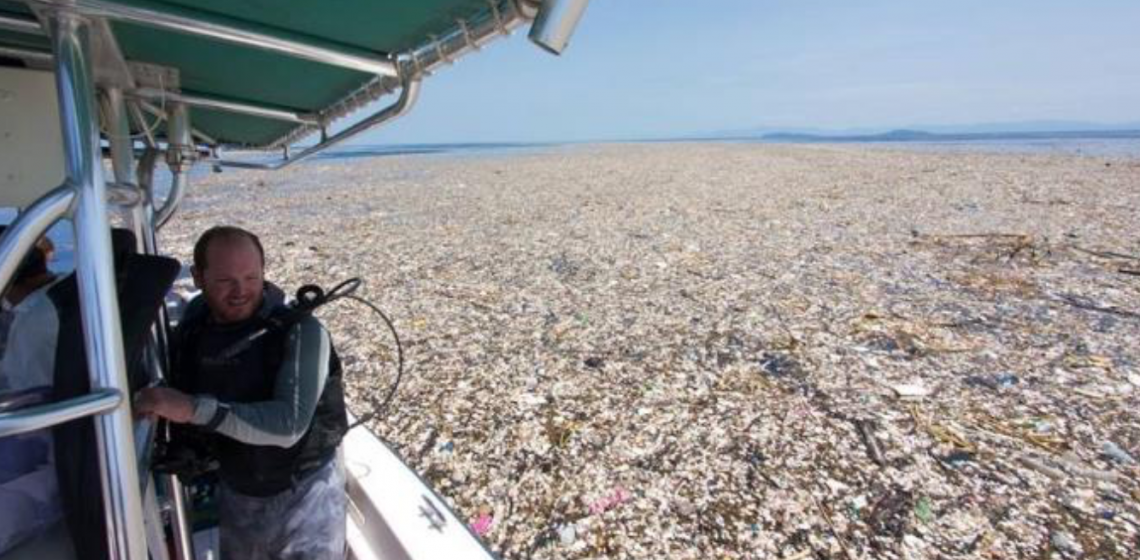Recent estimates suggest that 91 percent of all plastic created for consumer use isn’t recycled. Scientists studying the plastic pollution problem have been horrified by the sheer amount of the stuff in our environment. Where does it all end up? Shocking photographs taken by Caroline Power of an entire “sea of plastic” in the Caribbean, provide compelling visual evidence that this environmental destruction must stop.
Jenna Jambeck, a University of Georgia environmental engineer who specializes in studying plastic waste in the oceans says:
“We all knew there was a rapid and extreme increase in plastic production from 1950 until now, but actually quantifying the cumulative number for all plastic ever made was quite shocking.”
Jambeck also told National Geographic that this amount of pollution would “break any system” that was not prepared for this level of waste.
Conceptualizing the billions of tons of plastic waste in our oceans has been difficult for many of us, but Powers urges everyone to take this problem personally, and to look at their own responsibility in contributing to the problem. On Facebook, Power posted this comment with her pictures…

“Think about your daily lives. How did you take your food to go last time you ate out? How was your last street food served? Chances are it was styrofoam and served with a plastic fork and then put in a plastic bag. Do you still use plastic garbage bags? Plastic soda bottles? Ziplock bags? Plastic wrap on your food?
Do you buy toilet paper that comes wrapped in plastic instead of paper? Do you put your fruit and veggies in produce bags at the grocery?
I challenge every person and every business to keep your trash for one week. Separate your organic and recyclables and keep everything else for one week. You will be disgusted how many single use items you use.”
While Powers’ photographs add to the growing collection of visual evidence of the problem of plastic, they sadly, don’t even begin to touch the depth of the issue.
A recent University of Florida study found that despite all the plastic trash we can see, plastic from our clothing – even those $100 yoga pants you thought were environmentally sourced – are clogging our waterways with plastic.
Funded by the National Oceanic and Atmospheric Association (NOAA), researchers conducted a two-year study to discover the source of the micro-plastic pollution accumulating in the Gulf of Mexico. They found that more than 80 percent of the micro-plastics found in the ocean are actually micro-fibers from synthetic clothing.
Every time you wash your gym clothes, yoga pants, or any other garment made from synthetic material, you’re shedding microscopic plastic fibers — called “microfibers” into natural waterways, which eventually make their way to the ocean.
These plastic microfibers are too small to be filtered out by tiny plants and fish. An additional paper has shown that microfibers are responsible for 85 percent of shoreline pollution across the globe.
In brief, it isn’t just the bottled we cart our shampoo home in from the grocery store, or the take-out food packaging, or the plastic bags – plastic pollution is even the clothing we wear that is polluting the ocean.
In addition to reducing plastic bag and plastic cup use, also consider washing your clothes in a “guppy bag” that may catch up to 90 percent of the microfibers, and simply opting to purchase clothing here on out made only from natural materials like wool, cotton, hemp, bamboo, etc.
One thing is clear from all the studies, and the shocking photographs taken by Powers – this must stop, but it won’t without some wide spread change. (Images: Caroline Power) – Source Themindunleashed

